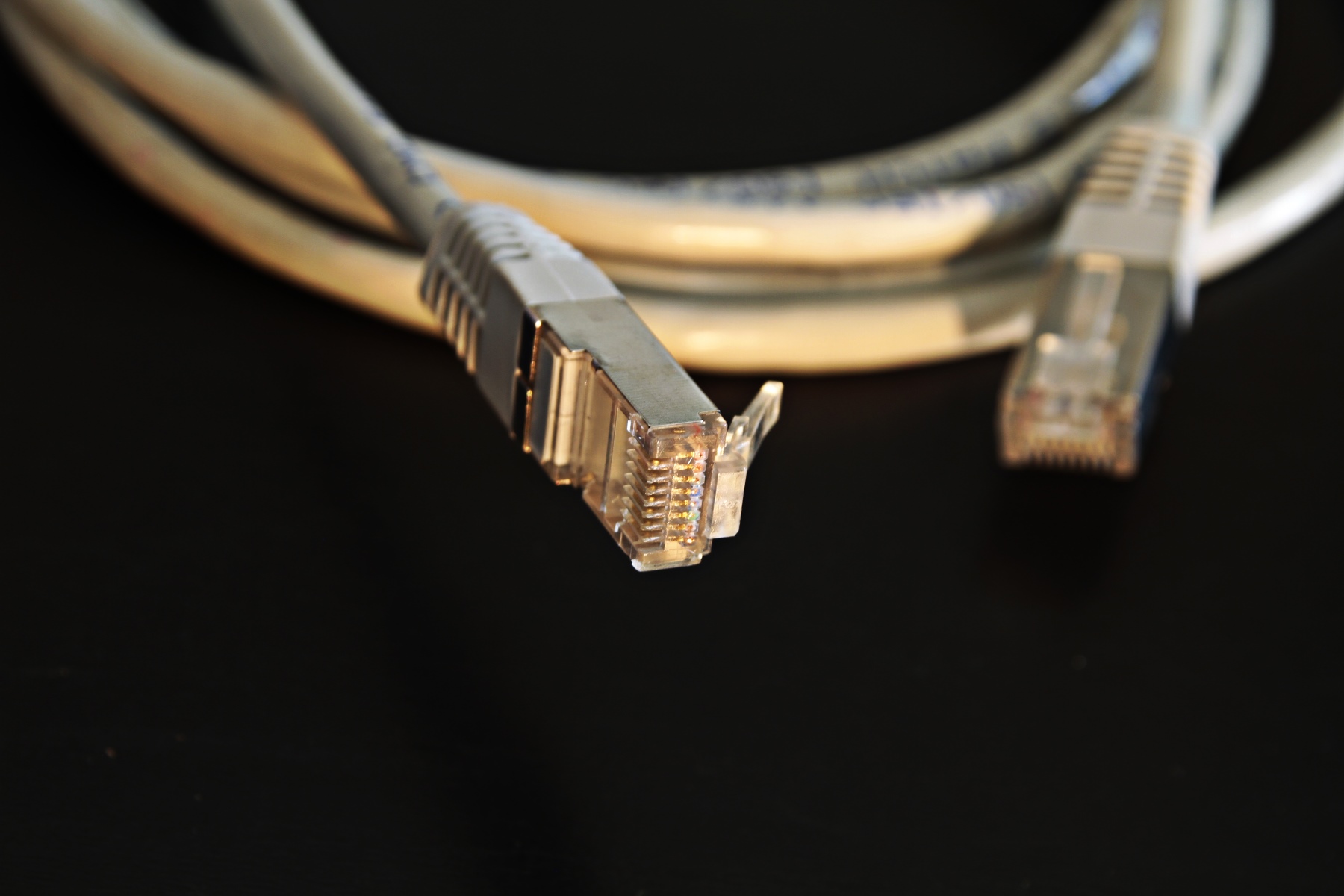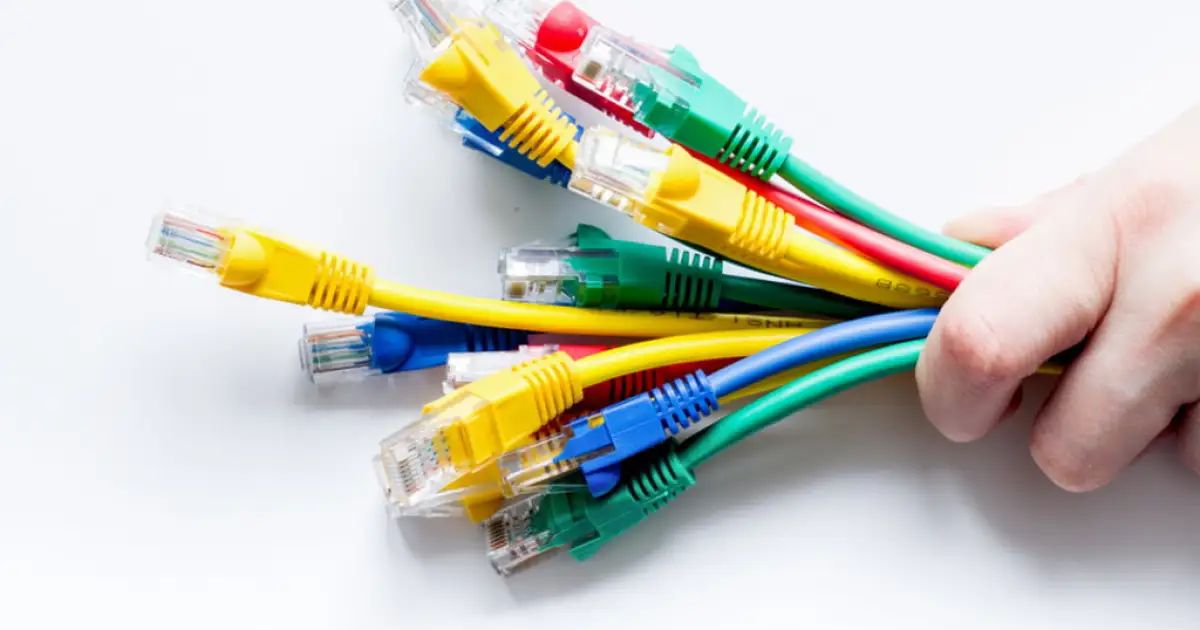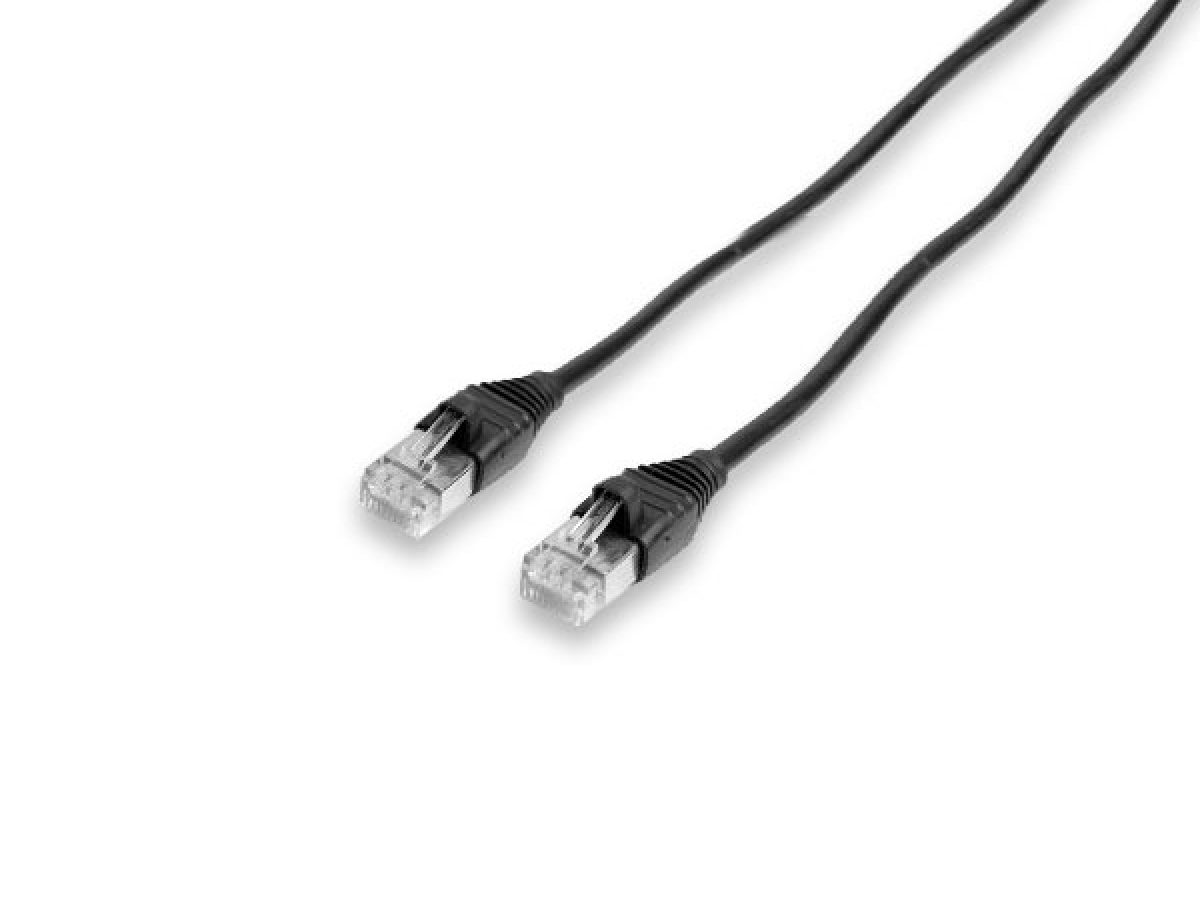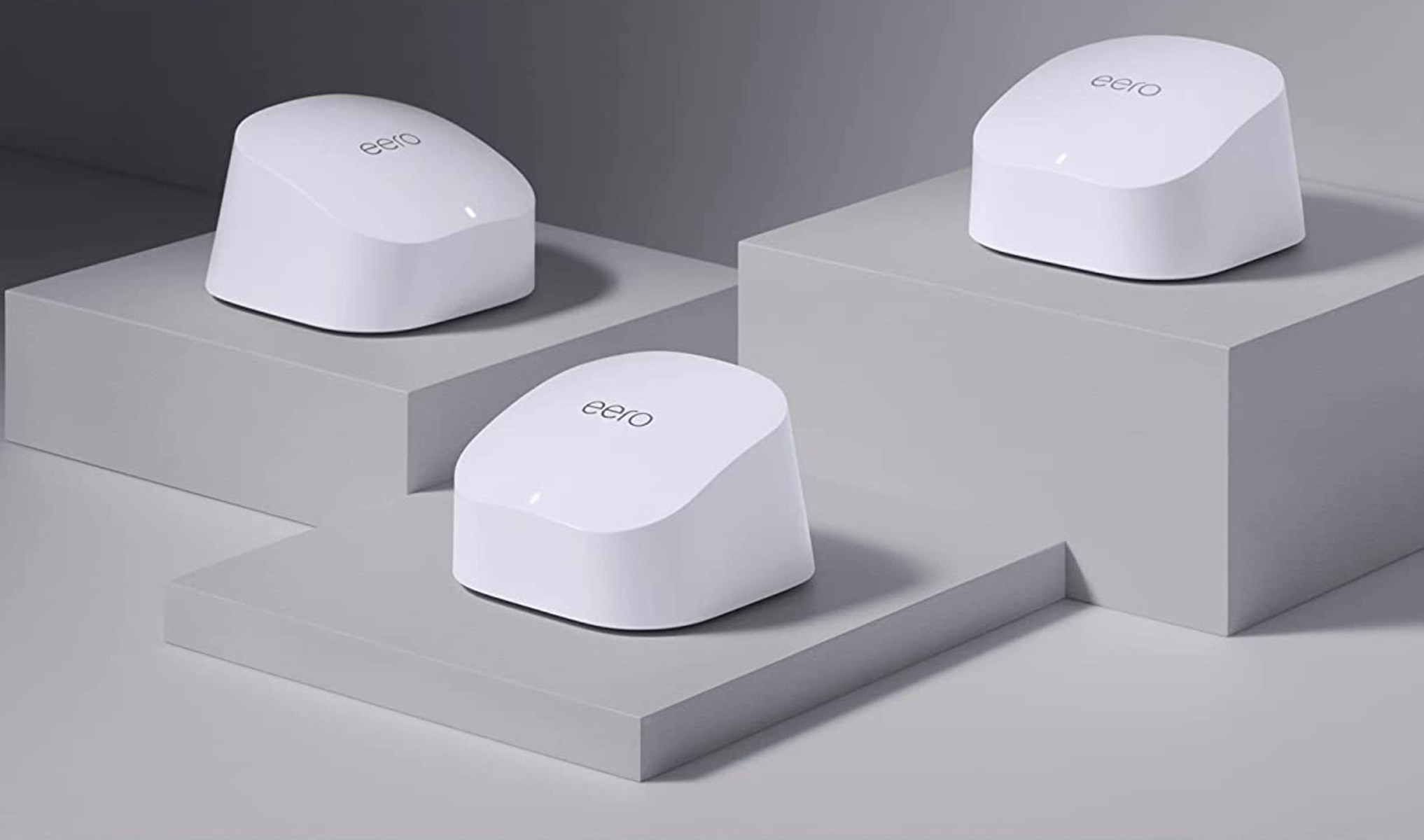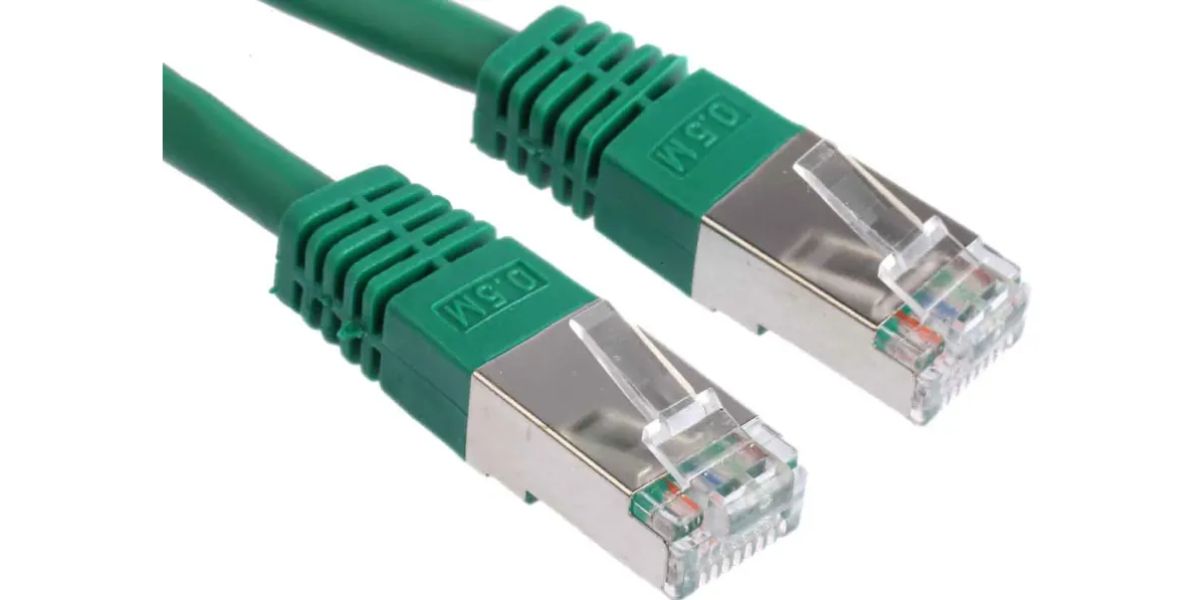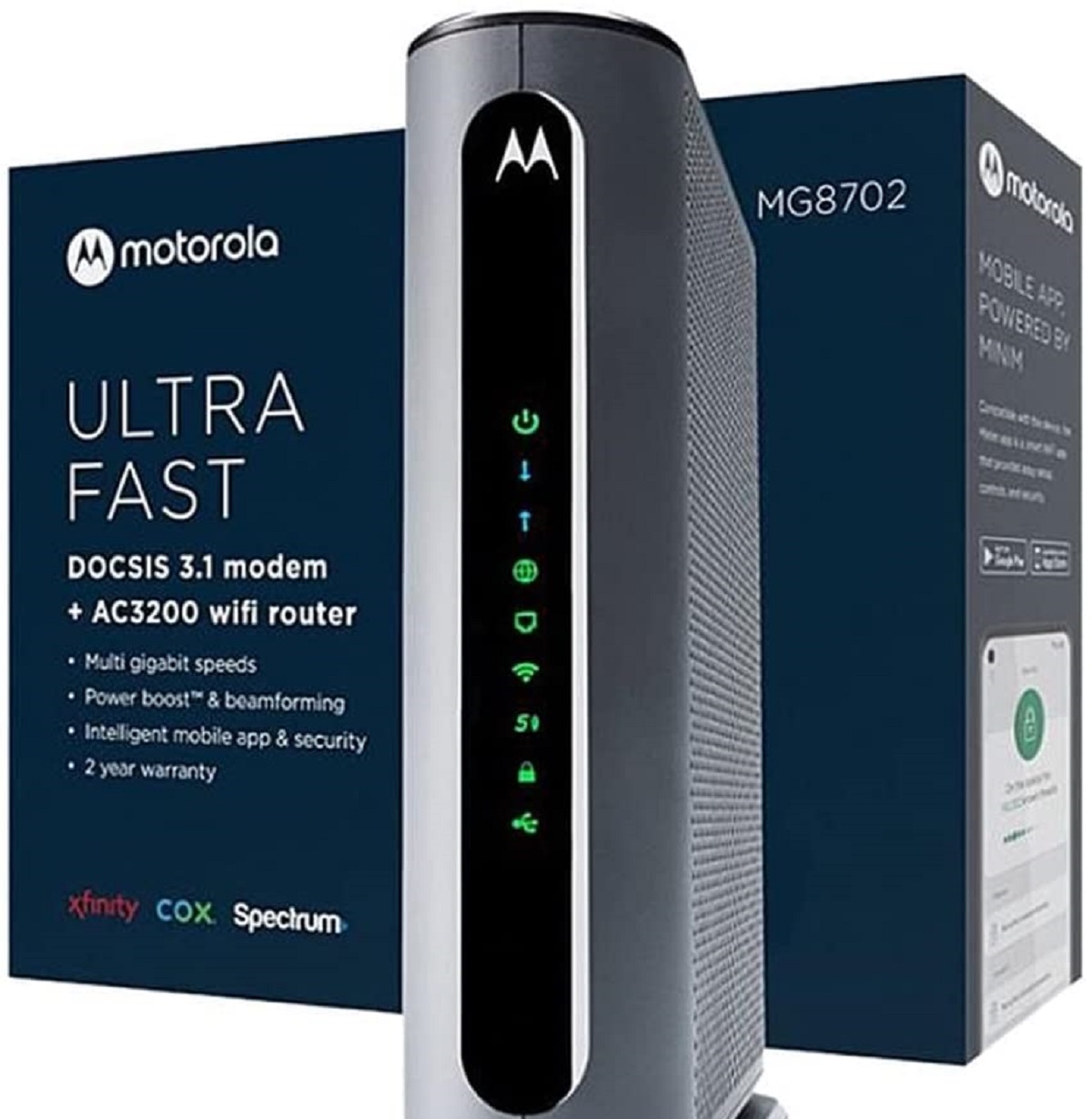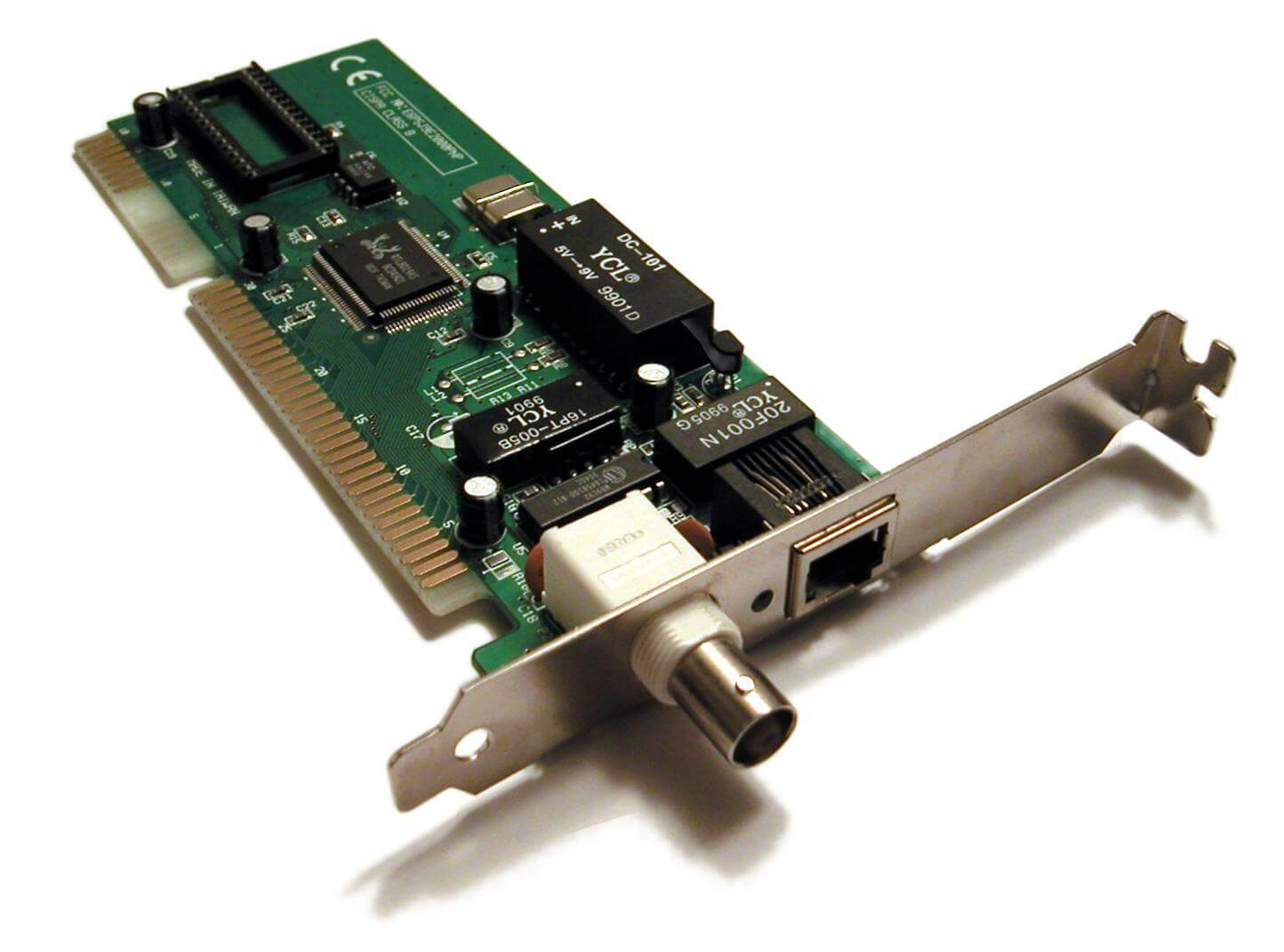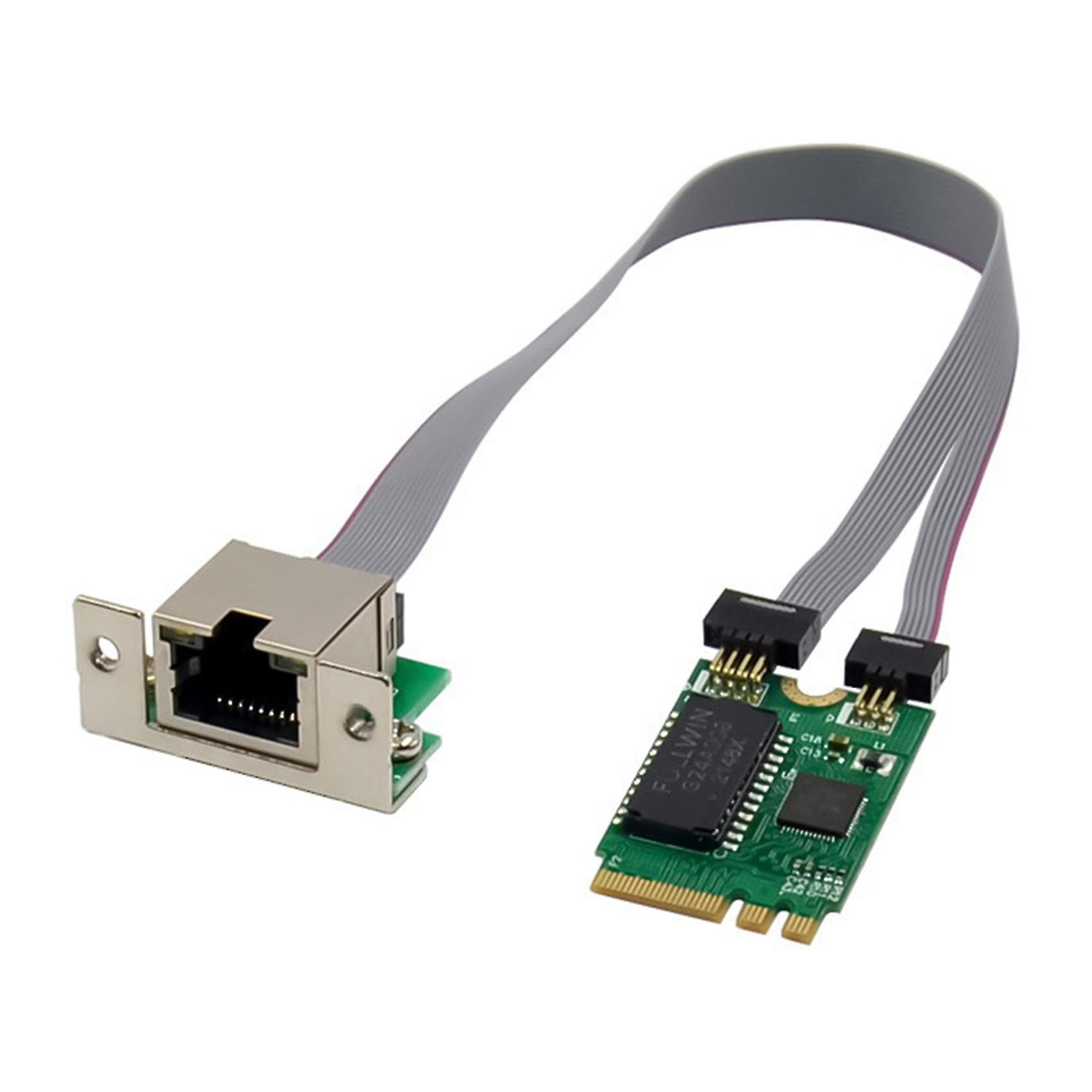Introduction
Welcome to the world of 10-Gigabit Ethernet (10GbE), a high-speed networking technology that has revolutionized data transmission. In today’s digital era, where the demand for faster and more reliable connectivity is paramount, 10GbE stands out as a formidable solution.
With speeds ten times faster than conventional Gigabit Ethernet, 10GbE is designed to meet the growing needs of businesses and organizations that require rapid data transfer, high bandwidth, and low latency. It has quickly become the go-to choice for industries such as finance, healthcare, and media, where large volumes of data need to be transferred and processed in real-time.
At its core, 10GbE works on the same principles as its predecessors, utilizing Ethernet protocols to transmit data packets across a network. However, its remarkable speed has catapulted it into a league of its own, allowing for seamless streaming, lightning-fast downloads, and efficient cloud computing.
But what sets 10GbE apart from its predecessors, and how does it benefit businesses and individuals alike? In this article, we will delve into the various aspects of 10GbE, including its speed, cost, distance limitations, cable types, power consumption, compatibility with existing infrastructure, and potential limitations.
Whether you’re a tech enthusiast, a business owner, or simply curious about the latest advancements in networking technology, this article will provide valuable insights into the world of 10-Gigabit Ethernet. So, buckle up and get ready to explore the exciting realm of ultra-fast data transmission.
What is 10-Gigabit Ethernet?
10-Gigabit Ethernet, also known as 10GbE or 10 GigE, is a networking technology that allows for data transmission at speeds of up to 10 gigabits per second (Gbps). It is an advancement over traditional Ethernet technologies, which typically offer speeds of 1 gigabit per second (Gbps) or lower.
At its core, 10GbE operates using the same Ethernet protocols as its predecessors, ensuring compatibility with existing networking infrastructure. However, its significantly higher speed makes it ideal for organizations and industries that require large bandwidth and rapid data transfer.
One of the primary advantages of 10GbE is its ability to handle heavy workloads. With its enhanced speed, it enables organizations to process and transfer large volumes of data quickly and efficiently. This makes it particularly useful in sectors such as media production, scientific research, financial services, and data centers, where time-sensitive operations and real-time data processing are crucial.
Beyond its speed, 10GbE offers several other benefits. It provides improved reliability and lower latency, ensuring minimal delays and smoother performance. This is especially important for applications that require fast and uninterrupted data transmission, such as video conferencing, online gaming, and cloud computing.
In terms of infrastructure requirements, 10GbE generally requires more robust components, including network interface cards (NICs), switches, and cabling capable of handling the higher data rates. However, with advancements in technology, the cost of these components has become more affordable, making 10GbE accessible to a wider range of users.
Whether you’re an enterprise looking to upgrade your network infrastructure or a technology enthusiast seeking the fastest, most reliable connection, 10-Gigabit Ethernet offers a powerful solution. Its exceptional speed, reliability, and compatibility make it an indispensable technology for organizations and individuals seeking to keep up with the ever-increasing demands of the digital age.
Speed
When it comes to networking, speed is of the utmost importance, and 10-Gigabit Ethernet delivers exceptional performance in this regard. With speeds of up to 10 gigabits per second (Gbps), it offers ten times the bandwidth of traditional Gigabit Ethernet.
At 10 Gbps, 10GbE enables rapid data transmission, empowering businesses and organizations to transfer large files in seconds rather than minutes. This is especially critical in sectors that rely heavily on data-intensive tasks, such as media production, scientific research, and data centers.
With its high speed, 10GbE allows for seamless streaming of high-definition video and audio content, ensuring smooth playback and reducing buffer times. It also facilitates faster backups and data replication, enabling organizations to efficiently safeguard their valuable data.
Furthermore, 10GbE excels in reducing latency, the delay between data transmission and reception. Low latency is crucial for various real-time applications, including online gaming, video conferencing, and VoIP (Voice over Internet Protocol) communications. By minimizing latency, 10GbE ensures a smooth and responsive user experience, enabling users to effortlessly communicate and collaborate across vast distances.
It is worth noting that while 10GbE is incredibly fast, achieving the maximum speed depends on various factors. These factors include the quality of the network infrastructure, the type of networking equipment used, and the capabilities of the connected devices. Nevertheless, even if the absolute top speed is not achievable in all scenarios, 10GbE still provides a significant boost in performance compared to lower-speed Ethernet options.
As technology continues to advance, the demand for faster speeds will undoubtedly increase. 10-Gigabit Ethernet stands at the forefront of high-speed networking, offering the necessary bandwidth to meet the ever-growing data requirements of today’s digital landscape.
Cost
When considering any technological advancement, cost is a crucial factor to evaluate. While 10-Gigabit Ethernet (10GbE) offers impressive speed and performance, it is important to understand the associated costs.
Historically, 10GbE technology came with a hefty price tag, making it primarily accessible to large enterprises with substantial budgets. However, as with many technologies, the cost of 10GbE has significantly decreased over time, making it more affordable and attainable for a broader range of businesses and organizations.
The cost of implementing 10GbE involves various components, including network interface cards (NICs), switches, and cabling. NICs enable devices to connect to the network at 10 Gbps, and while they can still be relatively expensive, the prices have become more competitive in recent years.
Switches are another critical component in a 10GbE network infrastructure. These devices allow multiple network devices to communicate with one another, providing higher bandwidth and facilitating the fast data transfer speeds. As demand has grown, manufacturers have introduced more affordable and scalable switch options, catering to a wider range of budgets.
Cabling plays a pivotal role in transmitting data within a 10GbE network. Copper-based cabling, such as Cat6a or Cat7, is commonly used for short-range connections, whereas fiber optic cabling is suitable for longer distances. The cost of cabling can vary depending on the quality and length required, but there are options available to fit different budget constraints.
While 10GbE does have associated costs, it is essential to consider the benefits and potential savings it offers. The increased speed and bandwidth provided by 10GbE can optimize workflow efficiency, reduce data transfer times, and enhance overall productivity. In industries where time-sensitive operations are critical, the cost of implementing 10GbE may be justified by the gains in performance.
Additionally, the cost of 10GbE continues to decline as technology advances and competition increases. This trend makes it more economically viable for businesses of all sizes, enabling them to leverage the benefits of faster networking without breaking the bank.
Ultimately, when assessing the cost of 10GbE, it is crucial to balance the upfront expenses with the long-term advantages it brings. By improving network performance and enabling rapid data transfer, 10GbE can provide a significant return on investment for businesses that rely on high-speed connectivity to drive their operations.
Distance
The distance over which data can be reliably transmitted is a critical consideration when evaluating networking technologies. When it comes to 10-Gigabit Ethernet (10GbE), the distance limitations can vary based on the type of cable used and the specific networking equipment in place.
Traditionally, the distance that 10GbE can span over a copper-based Ethernet cable, such as Cat6a or Cat7, is limited to around 100 meters (328 feet). This distance is suitable for most office environments, where devices are typically within proximity of each other. It allows for flexible and efficient networking within a single building or floor.
However, when longer distances are required, such as in large corporate campuses or data center environments, fiber optic cabling is the preferred choice. Fiber optic cables can extend the reach of 10GbE significantly, covering distances of up to several kilometers without any significant data loss or degradation.
Using fiber optic cables, 10GbE can be deployed to connect different buildings within a campus or provide interconnectivity for geographically dispersed locations. This enables seamless communication and data transfer over long distances, offering flexibility and scalability for businesses with diverse network infrastructures.
It is important to note that the distance limitations of 10GbE can also be influenced by the networking equipment, including switches and transceivers. High-quality equipment designed specifically for 10GbE can help overcome distance limitations by amplifying signals and improving overall data transmission performance.
For scenarios where longer distances are required, technologies like Ethernet over MPLS or dark fiber solutions can be employed to extend the reach of 10GbE even further. These options allow for connectivity between remote sites or service providers, enabling efficient data transfer and communication across wide geographic areas.
While distance limitations should be considered when implementing 10GbE, it is worth noting that for most standard office environments or small to medium-sized business setups, the typical 100-meter range of copper cables is more than sufficient. And in cases where longer distances are involved, fiber optic solutions provide the necessary flexibility and scalability to meet the networking requirements.
By understanding the distance limitations and utilizing the appropriate cabling and networking equipment, businesses can effectively leverage the high-speed capabilities of 10GbE over various distances to enable seamless connectivity and efficient data transfer.
Type of Cables Used
The type of cables used in a networking infrastructure can significantly impact the performance and reliability of data transmission. When it comes to 10-Gigabit Ethernet (10GbE), there are two primary types of cables commonly used: copper-based cables and fiber optic cables.
Copper-based Cables:
Copper-based cables, such as Cat6a or Cat7, have long been the standard for Ethernet connectivity. These cables utilize copper conductors to transmit data signals. Cat6a cables are capable of supporting 10GbE over short distances, typically up to 100 meters (328 feet), making them ideal for most office environments.
Cat6a cables have enhanced shielding and tighter twisting of wire pairs, which reduces crosstalk and electromagnetic interference. This ensures reliable data transmission and minimizes the chances of signal degradation or disruptions in high-bandwidth situations.
Fiber Optic Cables:
Fiber optic cables offer a higher level of performance and flexibility, particularly when longer distances are involved. These cables use thin strands of glass or plastic, known as optical fibers, to transmit data using light signals instead of electrical currents.
Fiber optic cables provide greater bandwidth and are capable of transmitting data over much longer distances compared to copper-based cables. With 10GbE, fiber optic cables can transmit data up to several kilometers without experiencing any significant loss in signal quality or speed degradation.
There are two types of fiber optic cables commonly used: single-mode and multi-mode. Single-mode cables are designed for longer distances and utilize a single, narrow optical path to transmit data. Multi-mode cables, on the other hand, are suitable for shorter distances and use multiple paths to transmit data.
Both single-mode and multi-mode fiber optic cables offer excellent performance and reliability, enabling organizations to implement high-speed 10GbE over various distances as needed.
When choosing the appropriate cable type for a 10GbE network, factors such as distance requirements, budget, and existing infrastructure should be taken into consideration. Copper-based cables are cost-effective and suited for shorter distances, while fiber optic cables provide the scalability and reliability needed for long-range connections.
It is also important to ensure that the networking equipment used, such as switches and network interface cards (NICs), are compatible with the selected cable type. This ensures seamless communication and optimal performance within the network infrastructure.
By carefully selecting the right type of cable for a 10GbE network, businesses can maximize performance, optimize data transmission, and ensure a robust and reliable networking infrastructure that meets their specific requirements.
Power Consumption
For any networking technology, power consumption is a critical consideration, not only to ensure efficient operation but also to minimize energy costs and environmental impact. When it comes to 10-Gigabit Ethernet (10GbE), power consumption can vary depending on the devices and networking equipment involved.
Generally, 10GbE devices consume more power compared to lower-speed Ethernet options. This is primarily due to the higher demands placed on the networking components to handle larger volumes of data at faster speeds. Network interface cards (NICs), switches, and routers designed for 10GbE often require more power to deliver the necessary performance.
However, it is worth noting that advancements in technology have led to the development of more power-efficient 10GbE components. Newer generations of NICs and switches are designed to deliver optimal performance while minimizing power consumption.
Power management features and techniques, such as Energy Efficient Ethernet (EEE) and Adaptive Link Rate (ALR), have been implemented to reduce power consumption during low-traffic periods. EEE enables devices to enter a low-power state when there is no data transmission, conserving energy. ALR, on the other hand, allows for dynamically adjusting the link rate based on the network traffic, optimizing power consumption while maintaining performance.
When selecting 10GbE networking equipment, it is essential to consider the power requirements and efficiency of the devices. Power specifications and energy ratings provided by manufacturers can help in making informed decisions. Choosing power-efficient components not only reduces energy consumption but also contributes to cost savings in the long run.
In addition to the devices themselves, the overall power consumption of a 10GbE network is influenced by factors such as the number of connected devices, network utilization, and network design. Efficient network planning, including optimized cable routing and proper cooling mechanisms, can help minimize power usage and enhance overall network performance.
Overall, while 10GbE devices may consume more power compared to lower-speed options, technological advancements have led to increased efficiency in power management. Choosing power-efficient components and implementing energy-saving measures can help organizations strike a balance between high-speed networking performance and responsible power consumption.
Compatibility with Existing Infrastructure
When considering the implementation of a new networking technology such as 10-Gigabit Ethernet (10GbE), compatibility with existing infrastructure is a crucial factor to assess. The ability to seamlessly integrate with the current network setup can save time, costs, and potential disruptions.
Fortunately, 10GbE is designed with backward compatibility in mind, allowing for a smooth transition from lower-speed Ethernet technologies. Most 10GbE devices, including network interface cards (NICs), switches, and routers, are designed to support multiple Ethernet standards, ensuring interoperability with existing hardware.
One of the primary factors that determine compatibility is the networking medium used. 10GbE can be deployed using both copper-based and fiber optic cables, and the choice depends on the existing infrastructure and specific requirements of the network. Copper-based cables, such as Cat6a or Cat7, can be used to leverage 10GbE in shorter distances, often utilizing the same cabling infrastructure used for Gigabit Ethernet. Fiber optic cables, on the other hand, provide the flexibility and scalability needed for longer distances and are typically employed in situations where connectivity extends beyond traditional copper-based solutions.
Additionally, network switches play a vital role in the compatibility equation. Switches designed for 10GbE are often equipped with multiple ports, allowing for connections to different Ethernet standards. This ensures seamless integration with existing network devices. It is advisable to verify the compatibility of switches with specific Ethernet protocols and speeds to ensure proper functioning within the network infrastructure.
Another important aspect to consider is the compatibility of network operating systems and management software with 10GbE. This ensures that network administrators can efficiently configure, monitor, and manage the network environment as they would with lower-speed Ethernet technologies. Most modern operating systems and software applications are compatible with 10GbE, making the integration process relatively straightforward.
In some cases, upgrading certain network components may be necessary to achieve full compatibility. For example, older network switches or routers may need to be replaced to support 10GbE speeds and functionalities. It is essential to evaluate the existing infrastructure and determine the hardware that needs upgrading or modification to ensure a seamless integration process.
By carefully assessing the compatibility of 10GbE with existing infrastructure, businesses can leverage the benefits of higher-speed networking without disrupting their current operations. It is crucial to thoroughly research and plan the implementation process to ensure a smooth transition and to optimize the performance and efficiency of the entire network infrastructure.
Limitations
While 10-Gigabit Ethernet (10GbE) offers impressive speed and performance, it is important to be aware of its limitations. Understanding these limitations can help businesses make informed decisions when implementing 10GbE in their network infrastructure.
Cost: One significant limitation is the cost associated with implementing 10GbE. While the cost has decreased over time, it still remains higher compared to lower-speed Ethernet options. The initial investment required for network interface cards (NICs), switches, cabling, and compatible equipment can be a significant barrier for small to medium-sized businesses with limited budgets.
Infrastructure Requirements: Another limitation is the need for robust infrastructure to support 10GbE. This includes high-quality cabling, such as Cat6a or Cat7 for copper-based connections, or fiber optic cables for longer distances. Upgrading existing network infrastructure may be necessary, adding to the overall cost and complexity of the deployment.
Power Consumption: 10GbE devices generally consume more power compared to lower-speed Ethernet technologies. While energy-efficient options are available, the increase in power consumption can impact energy costs and the environmental footprint of a network. Careful consideration of power management strategies, efficient cooling mechanisms, and power-efficient components is necessary to mitigate this limitation.
Distance Limitations: The distance over which 10GbE can be reliably transmitted depends on the type of cables used. Copper-based cables, such as Cat6a or Cat7, have a limited reach of approximately 100 meters (328 feet). To cover longer distances, fiber optic cables are required. Depending on the specific network requirements, businesses may need to invest in fiber optic cabling infrastructure to overcome this limitation.
Compatibility: While 10GbE is designed with backward compatibility in mind, ensuring compatibility with existing networking equipment and operating systems is crucial. Upgrading or replacing certain components, such as switches or network interface cards, may be required to fully leverage the benefits of 10GbE. Additionally, network management software and tools should be compatible with 10GbE for seamless integration and administration.
Network Utilization: The full potential of 10-Gigabit Ethernet may not be realized if the network does not fully utilize the available bandwidth. Applications and devices within the network need to be capable of utilizing the higher speeds offered by 10GbE. In some cases, bottlenecks may occur if the network components cannot keep up with the fast data transfer rates.
By understanding and addressing these limitations, businesses can navigate the challenges associated with implementing 10GbE and make informed decisions about its deployment. Careful evaluation of the specific requirements, costs, and infrastructure considerations can help maximize the benefits of 10GbE and ensure a well-optimized and efficient network environment.
Conclusion
10-Gigabit Ethernet (10GbE) has emerged as a powerful networking technology that offers exceptional speed, performance, and reliability. It has quickly become the standard for industries that require rapid data transfer, high bandwidth, and low latency.
Throughout this article, we have explored various aspects of 10GbE, including its speed, cost, distance limitations, cable types, power consumption, compatibility with existing infrastructure, and potential limitations.
With speeds ten times faster than traditional Gigabit Ethernet, 10GbE provides the necessary bandwidth to meet the growing demands of today’s data-intensive applications. It empowers businesses and organizations to efficiently process and transfer large volumes of data, enabling seamless streaming, fast downloads, and rapid cloud computing.
While the initial cost of implementing 10GbE may be a consideration, the affordability of its components has significantly improved over time. This has made 10GbE more accessible to businesses of all sizes, offering a compelling return on investment in terms of enhanced productivity and optimized workflows.
Distance limitations can be overcome through the use of fiber optic cables, which provide the necessary flexibility and scalability for long-range connectivity. The compatibility of 10GbE with existing infrastructure ensures a seamless integration process, allowing businesses to leverage their current resources while maximizing the benefits of higher-speed networking.
Power consumption remains a consideration, but advancements in technology have led to more energy-efficient 10GbE components. Power management strategies and efficient cooling mechanisms can further optimize power consumption, reducing both energy costs and environmental impact.
It is important to keep in mind the limitations of 10GbE, such as cost, infrastructure requirements, and compatibility with existing equipment. By understanding and addressing these limitations, businesses can make informed decisions about implementing 10GbE to ensure a well-optimized and efficient network environment.
In conclusion, 10-Gigabit Ethernet presents a compelling option for organizations seeking faster and more reliable connectivity. Its exceptional speed, performance, and compatibility make it a game-changer in industries where data transfer and processing are paramount. By leveraging the benefits of 10GbE, businesses can stay ahead in the ever-evolving digital landscape and harness the power of high-speed networking to drive their success.







